


Finding Clarity In A Noisy World

In a world characterized by constant noise and ceaseless activity, the art of quiet reflection has become a rare and valuable skill. The demands of our fast-paced lives, along with the ubiquitous presence of digital devices, often leave little room for moments of tranquility and introspection. In this article, we explore the significance of quiet reflection and how it can offer a sanctuary of calm and clarity in the midst of the chaos.
Quiet reflection is the practice of setting aside time to contemplate, ponder, and introspect. It provides an opportunity to escape the relentless distractions of daily life, fostering a deeper understanding of ourselves, our experiences, and the world around us. Here are some reasons why it's important:
Mental Clarity: Quiet reflection helps declutter your mind, making it easier to focus and make decisions. By allowing your thoughts to settle, you can gain clarity on complex issues and identify solutions that may have been previously obscured.
Stress Reduction: Taking time for quiet reflection is a proven stress management technique. It allows you to release built-up tension and anxiety, leading to a more relaxed and balanced mental state.
Emotional Awareness: Reflecting quietly enables you to explore your emotions and understand them better. This self-awareness can help you manage your feelings and improve your relationships with others.
Creativity: Many creative breakthroughs occur during moments of quiet reflection. When your mind is free from external distractions, it has the space to generate novel ideas and innovative solutions.
Personal Growth: By contemplating your life and experiences, you can set goals, make plans, and track your progress more effectively. Quiet reflection is a valuable tool for personal development and self-improvement.
Now, let's explore how to incorporate quiet reflection into your daily life:
Set Aside Time: Schedule specific time each day for quiet reflection. This could be as brief as a few minutes or longer, depending on your preferences and availability.
Choose A Peaceful Environment: Find a quiet and comfortable place where you won't be disturbed. It might be a corner of your home, a park, or a quiet room in your workplace.
Disconnect: Put away electronic devices during your reflection time. Turn off notifications and resist the urge to check your phone, emails, or social media.
Breathe: Start your reflection with deep, calming breaths. This simple exercise can help you relax and transition into a state of mindfulness.
Journal: Consider keeping a reflection journal. Write down your thoughts, feelings, and insights during your quiet moments. Journaling can help you track your progress and clarify your thinking.
Mindfulness Meditation: If you find it difficult to stay focused, mindfulness meditation techniques can guide you in maintaining concentration during reflection.
Gratitude Practice: Reflect on the things you're grateful for. This practice can shift your perspective towards a more positive and appreciative outlook on life.
Quiet reflection is a powerful tool for finding serenity and clarity in a noisy world. It allows you to gain mental clarity, reduce stress, enhance emotional awareness, boost creativity, and promote personal growth. By incorporating these practices into your daily life, you can harness the benefits of quiet reflection and make it an integral part of your well-being and personal development journey. In this tumultuous age, the ability to reflect quietly can be a source of strength, resilience, and inner peace.


Crafting A Sustainable Future
 The Essence Of Green DIY Projects
The Essence Of Green DIY Projects
Green DIY projects combine creativity with sustainability, providing a platform for you to express yourself while making environmentally responsible choices. These projects encompass a wide range of activities, from upcycling furniture and crafting eco-friendly home decor to making your own natural cleaning products or gardening with organic, homegrown produce.
Environmental Benefits
One of the most significant advantages of green DIY projects is their environmental impact. By consciously choosing sustainable materials, repurposing items, and reducing waste, these projects contribute to a greener and more eco-friendly world. They help lower the carbon footprint by diverting usable materials from landfills, conserving resources, and minimizing the environmental impact of manufacturing and transportation.
Promoting Sustainability
Green DIY projects promote sustainability in multiple ways. They encourage you to use sustainable, eco-friendly materials, such as reclaimed wood, bamboo, recycled fabrics, and non-toxic paints. By crafting your own goods, you also reduce the demand for mass-produced items, which often involve harmful chemicals, excessive packaging, and wasteful practices.

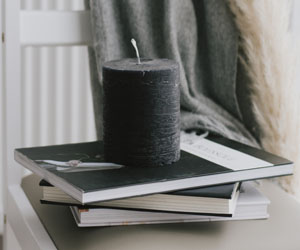
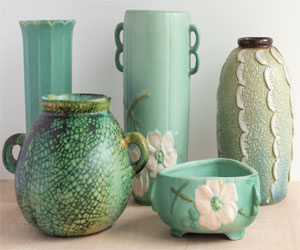
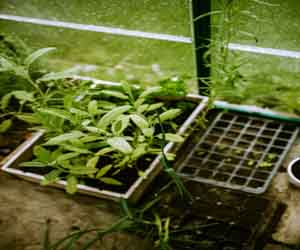
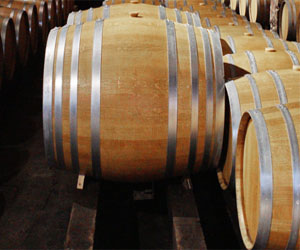
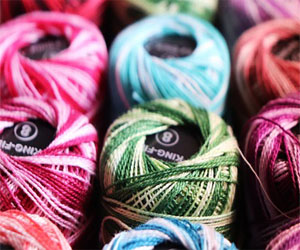
A Green Revolution In Beauty
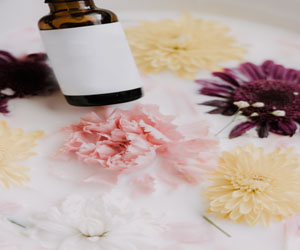 Clean Beauty: One of the core principles of plant-based cosmetics is their commitment to clean beauty. They avoid harmful chemicals, synthetic fragrances, and toxic additives found in traditional cosmetics. This reduces the risk of skin sensitivities, allergies, and long-term health issues.
Clean Beauty: One of the core principles of plant-based cosmetics is their commitment to clean beauty. They avoid harmful chemicals, synthetic fragrances, and toxic additives found in traditional cosmetics. This reduces the risk of skin sensitivities, allergies, and long-term health issues.
Sustainability In Practice: Many plant-based cosmetics brands prioritize sustainable practices. They responsibly source their ingredients, employ eco-friendly manufacturing methods, and package their products in recyclable or biodegradable materials. This substantially reduces their ecological footprint.
Cruelty-Free Commitment: A significant portion of plant-based cosmetics is cruelty-free, meaning they do not engage in animal testing. This aligns with the principles of compassionate consumerism and ethical treatment of animals.
Transparency And Accountability: Transparency is a hallmark of plant-based cosmetics brands. They provide clear and detailed information about their ingredients, sourcing, and production processes. This empowers consumers to make informed choices about the products they apply to their skin.
Broad Range Of Products: Plant-based cosmetics extend beyond skincare to include makeup products like foundations, lipsticks, and eyeshadows. These clean cosmetics provide safe and effective alternatives for enhancing beauty without compromise.
Holistic Beauty Philosophy: Plant-based cosmetics encourage a holistic approach to beauty, emphasizing the connection between external well-being and inner harmony. They advocate self-care, mental wellness, and self-confidence.
The Allure Of Vintage Items
 A Glimpse Into The Past
A Glimpse Into The Past
Vintage items transport us back in time, allowing us to connect with the past and experience the styles and aesthetics of bygone eras. Each vintage piece carries a story, representing the culture, trends, and craftsmanship of the time in which it was created. It's like holding a tangible piece of history in your hands.
Unique And One-Of-A-Kind
One of the primary attractions of vintage items is their uniqueness. Unlike mass-produced modern goods, vintage pieces are often one-of-a-kind or produced in limited quantities. This rarity gives vintage items a sense of exclusivity and individuality, making them highly sought after.
Quality Craftsmanship
Vintage items are known for their superior craftsmanship. In the past, attention to detail and quality were highly prized, resulting in products that were built to last. Vintage clothing often features hand-stitched seams, while vintage furniture may showcase intricate woodwork. The durability and craftsmanship of vintage items are often far superior to their modern counterparts.
Sustainable Shopping
In a world increasingly concerned about sustainability and environmental impact, vintage shopping has gained popularity as a sustainable alternative to fast fashion and disposable consumer goods. Buying vintage items extends the life cycle of products and reduces the demand for new manufacturing, contributing to a greener and more eco-conscious lifestyle.
The Art Of Crewel Embroidery
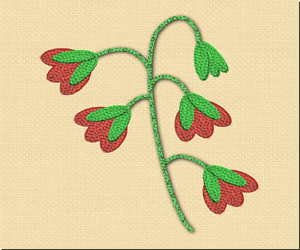 A Stitch In Time: The History Of Crewel Embroidery
A Stitch In Time: The History Of Crewel Embroidery
Crewel embroidery has a storied history that dates back over a thousand years. The word "crewel" is believed to have originated from the Old French word "croisel," which referred to a piece of metal or a slender wire used for embroidery. Crewelwork gained prominence in Europe during the 16th and 17th centuries and was particularly associated with England.
Characteristics Of Crewel Embroidery:
Crewel embroidery is known for its distinct characteristics, which set it apart from other embroidery techniques:
Use Of Crewel Wool: Crewel wool, a fine and twisted two-ply yarn, is the primary thread used in this technique. Its thickness and texture lend depth and dimension to the designs.
Raised Surface Stitches: Crewel embroidery often employs raised or padded stitches. These give the designs a textured, three-dimensional quality.
Botanical And Natural Motifs: Traditional crewelwork is renowned for its intricate depictions of botanical and natural motifs, including flowers, vines, and animals.
Tips For Small And Large Gardens
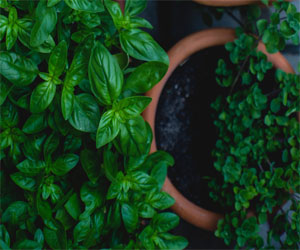 Select containers with proper drainage and consider hanging pots, window boxes, or vertical herb gardens.
Select containers with proper drainage and consider hanging pots, window boxes, or vertical herb gardens.
Group compatible herbs in a single pot or use tiered plant stands to stack multiple containers vertically.
Regularly prune and harvest your herbs to maintain their size and prevent overcrowding.
Indoor Herb Gardens
If you have limited outdoor space, an indoor herb garden can provide fresh herbs year-round. Some tips for indoor gardening include:
Place pots on windowsills or under artificial grow lights to ensure they receive adequate sunlight.
Consider using self-watering pots or hydroponic systems to make indoor herb gardening more convenient.
Be attentive to indoor humidity and ventilation to prevent issues like mildew or pests.
Keep pots near the kitchen for easy access to fresh herbs while cooking.
Large Herb Gardens
Garden Layout
Larger garden spaces offer more opportunities for creativity and plant diversity. Consider these strategies for maximizing your herb garden space:
Design your garden with clearly defined paths and designated planting areas to optimize organization and accessibility.